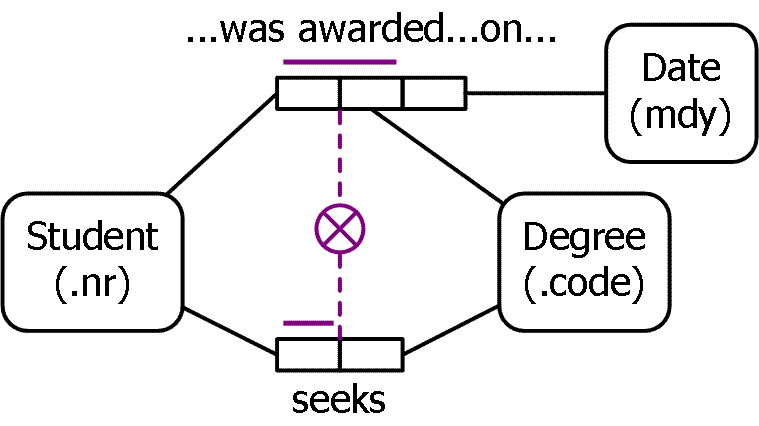 Object Role Modeling
Object Role Modeling Object Role Modeling
Object Role ModelingThe designer of a database builds a formal model of the application area or UniverseOfDiscourse. The model requires a good understanding of the UniverseOfDiscourse and a means of specifying this understanding in a clear, unambiguous way. ObjectRoleModeling simplifies the design process by using Unnatural language(such as deontic and alethic), as well as intuitive diagrams which can be populated with examples, and by examining the information in terms of simple or elementary facts. By expressing the model in terms of natural concepts, like objects and roles, it provides a conceptual approach to modeling. Its attribute-free approach promotes semantic stability.

ORM's rich graphic notation is capable of capturing many business rules that are typically unsupported as graphic primitives in other popular data modeling notations.
More info here: http://en.wikipedia.org/wiki/Object_role_modeling
First, please do not confuse ObjectRoleModeling with ObjectRelationalMapping ;-). ObjectRoleModeling is designed to work with RelationaDatabases?, not ObjectRelationalMappers? or ObjectDatabases?, ObjectRoleModeling is (IMHO) about finding the best schema to store facts (See DatabaseIsRepresenterOfFacts).
Now the real subject:
Anyone here has tried modeling their databases using this? (I did a few years ago with mixed results, it was my first system in my first job, so I think many of my problems were due to my inexperience, but back then I thought that this was going to be the modeling standard of the future, so now, I am surprised that is has not been widely adopted) I think it could be a better match for TrueRelationalModeling? than the typical EntityRelationshipModeling.
I also wonder if anyone here has compared ObjectRoleModeling ConceptualQueries with TutorialDee.
 EditText of this page
(last edited December 5, 2011)
or FindPage with title or text search
EditText of this page
(last edited December 5, 2011)
or FindPage with title or text search